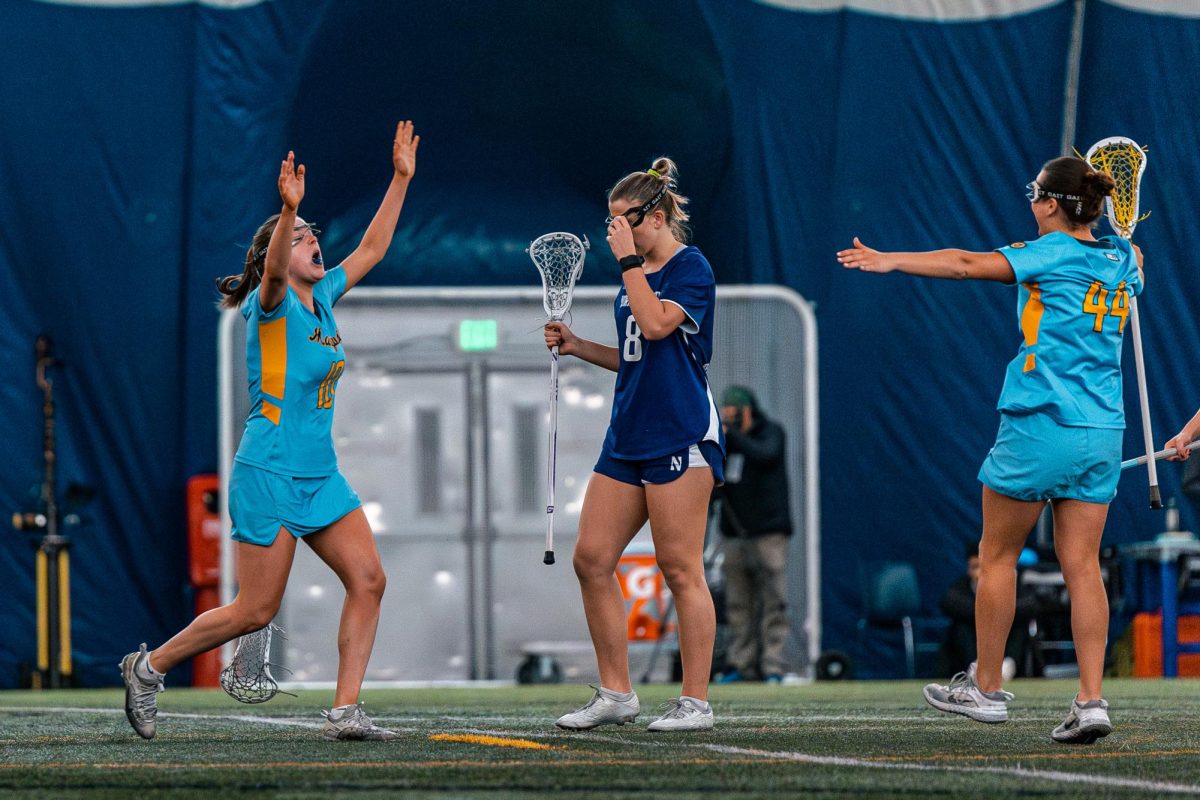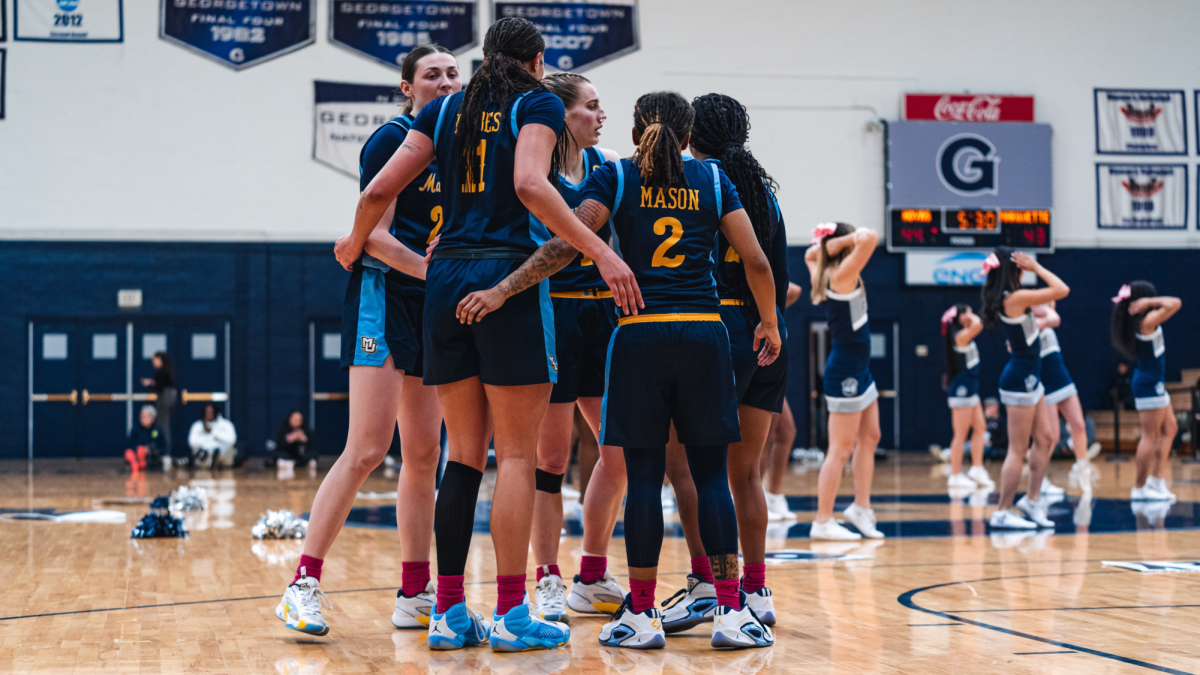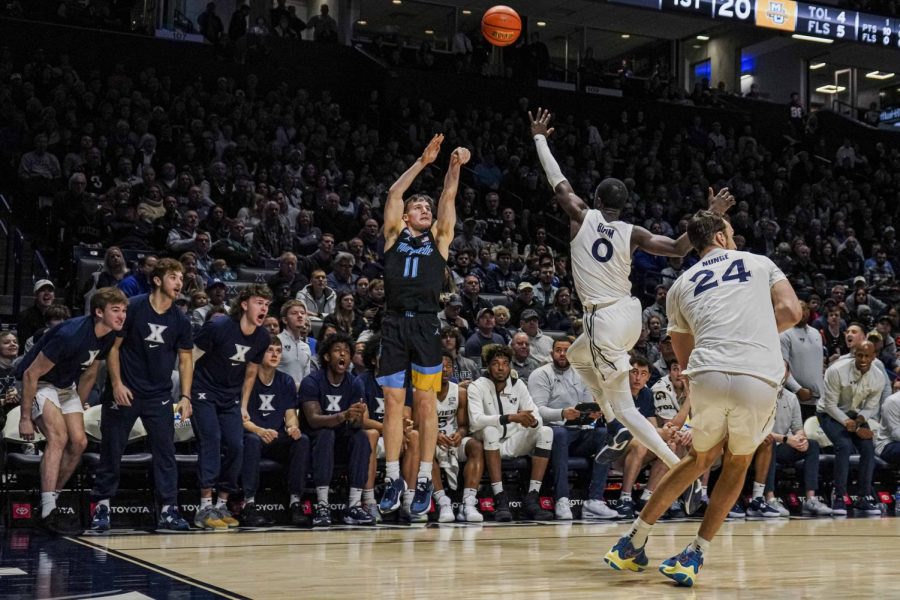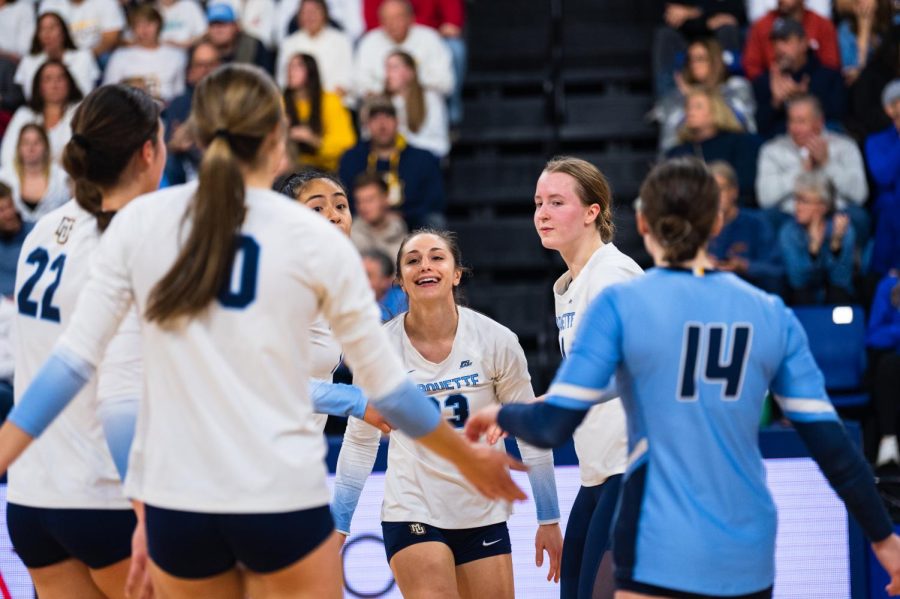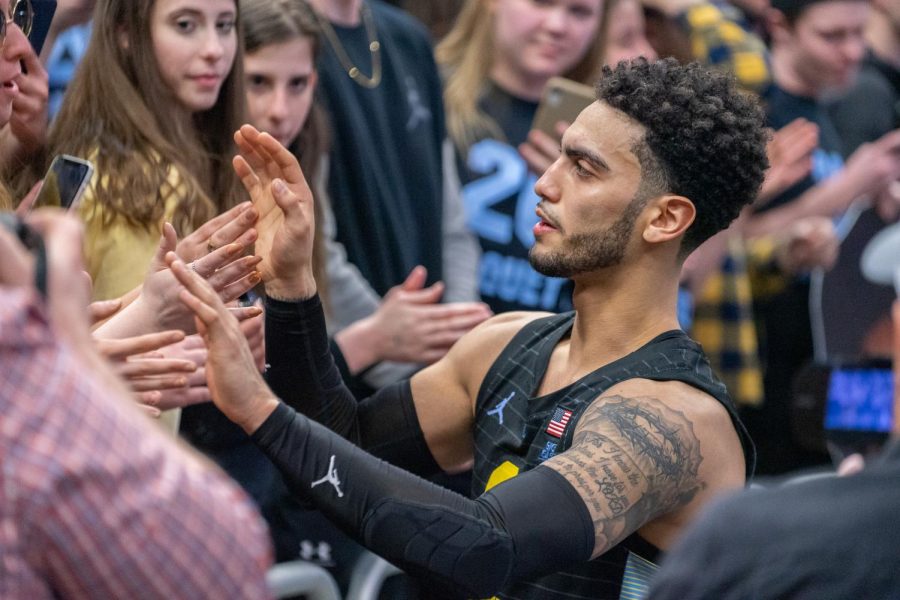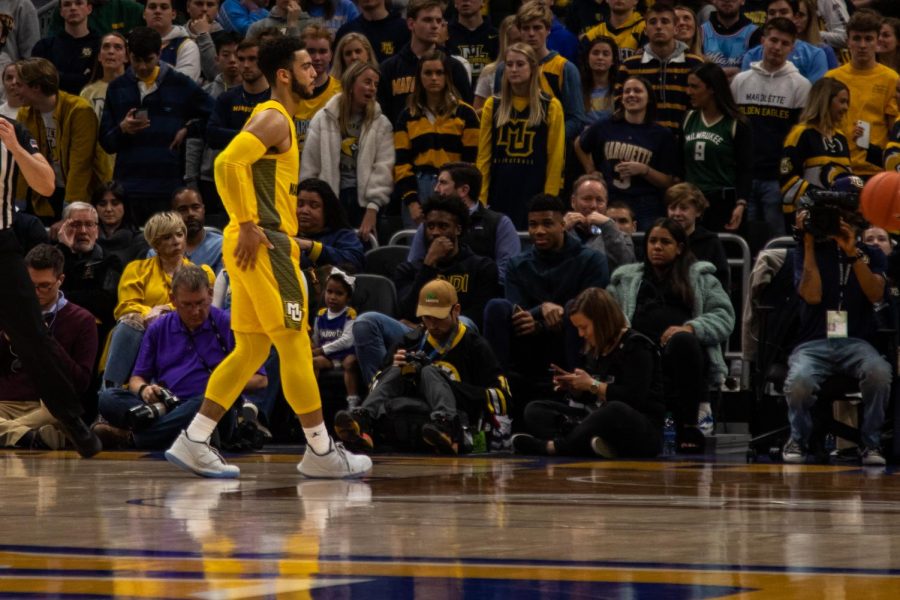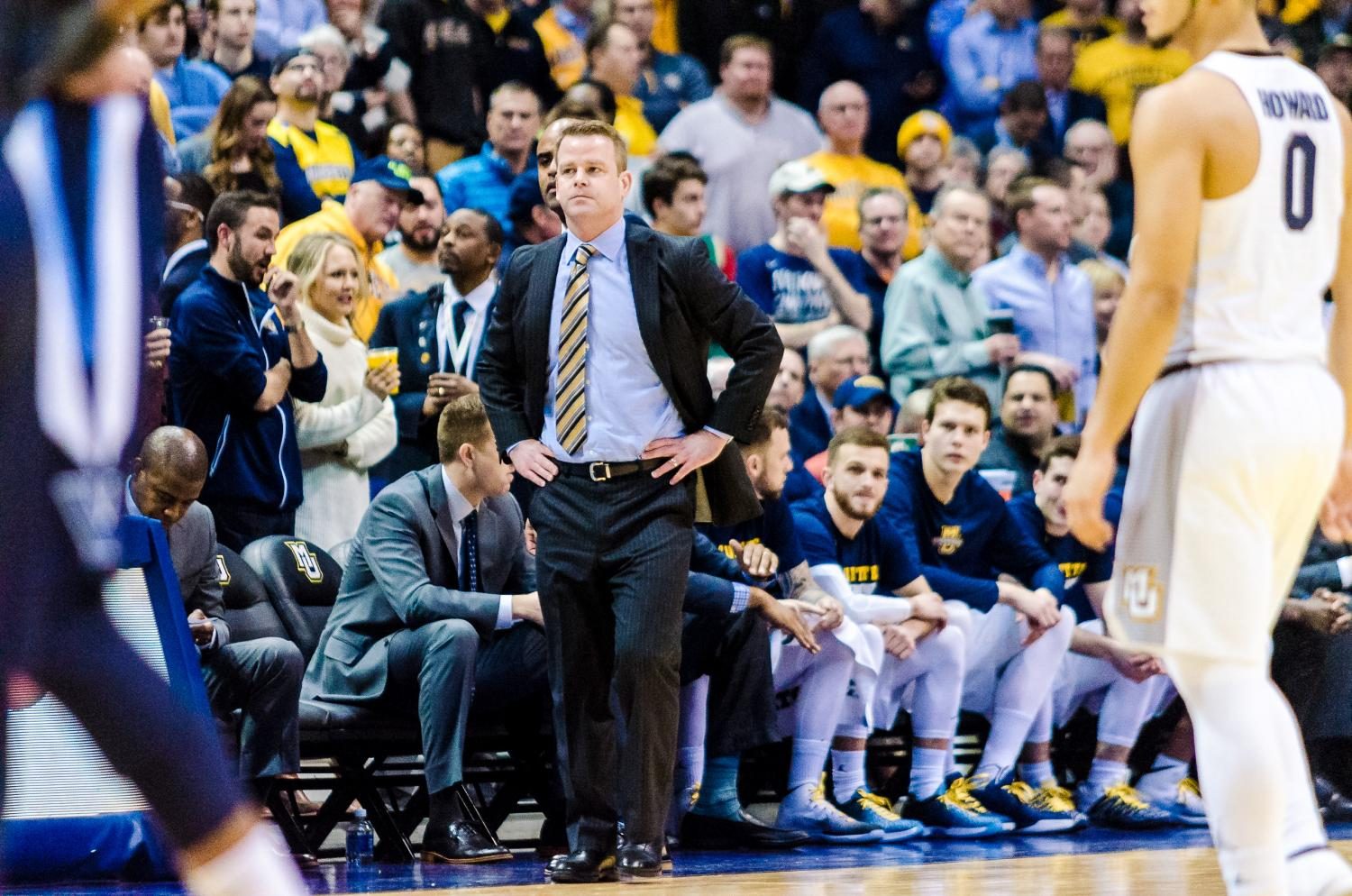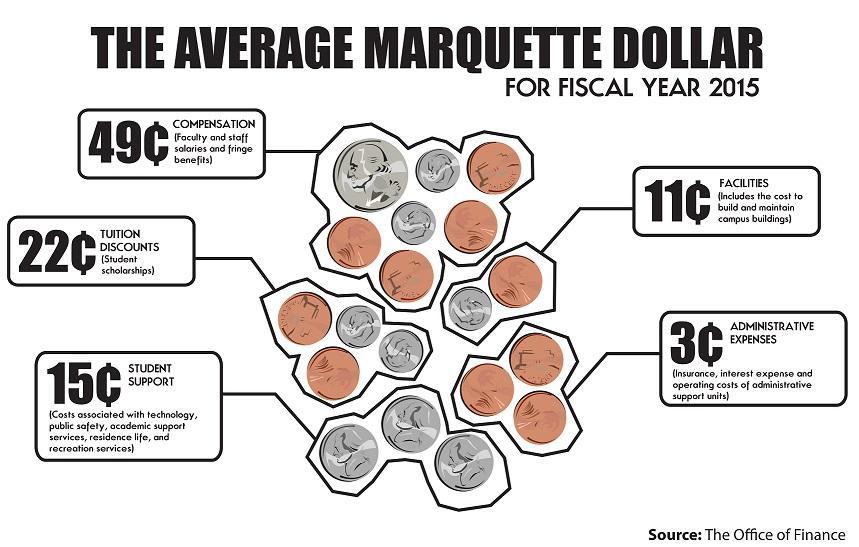
Droves of students lined up outside the Al McGuire Center for hours before the university’s annual basketball pep rally, Marquette Madness, on Friday, defying October’s chill with a golden blaze of school spirit.
The highly popular event is a testament to a basketball program that brings in millions of dollars due to both ardent Marquette fans and continued athletic success – $15,568,569 to be exact, according to data from the Department of Education’s 2010-2011 Equity in Athletics Data Analysis. Although $10,348,303 of that was negated by expenses, Marquette men’s basketball still yielded a $5,220,266 profit for the year. Women’s basketball was the only other sport at Marquette to make a profit — $118,336 in the same fiscal year.
That’s probably why Marquette pays men’s basketball head coach Buzz Williams and women’s basketball head coach Terri Mitchell the big bucks. William’s base salary of $1,070,125 makes him Marquette’s highest paid employee. Mitchell is the university’s second-highest paid employee with a $427,957 base salary, according to Marquette’s 2011 990 IRS Tax Form.
Williams’ salary is 39 percent greater than the average salary of coaches of men’s teams in the Big East conference and 101 percent more than the national average for Division I basketball teams. When compared to other Division I men’s basketball head coaches, Williams’ base salary more than doubles the national median of $329,300.
With deferred compensation, a bonus and non-taxable benefits thrown into the mix, Williams earned a total of $1,105,203 from Marquette in the 2010-2011 period. Counting monetary gains outside of Marquette, he raked in $2,834,685 total, according to a USA Today database. Williams ranks eighth on this list of 68 NCAA tournament-qualifying Division I head coaches of men’s basketball.
Williams’ 2010-2011 earnings were more than twice Mitchell’s salary, which amounted to $453,475 with deferred compensation and non-taxable benefits in that same pay period. However, Mitchell’s earnings exceeded the average salary for coaches of women’s teams in the Big East of $129,479 and the $171,600 national median for Division I coaches of women’s basketball teams, according to data from the Department of Education.
Although Williams’ salary was greater than Mitchell’s, they earned a similar portion of their team’s incomes. Both coaches earned less than fifteen percent of their teams’ revenues, with Mitchell recording a salary equal to about 14 percent of her team’s revenues in 2010-2011, and Williams about 7 percent.
Over the last four years, the national median salary of Division I head women’s basketball coaches only increased by 28 percent as opposed to the 40 percent increase for Division I head men’s basketball coaches.
Outside of basketball, the trend remains generally the same. According to the Department of Education’s Equity in Athletics Data Analysis, the average institutional salary for head coaches of men’s teams at Marquette from 2010-2011 was $416,556, while the salary for head coaches of women’s teams was only about a third of that – $153,938.
From 2003 to 2010, the average salary for coaches of NCAA Division I men’s teams in any sport increased by 67 percent to $267,007, according to statistics from the Department of Education. In that same seven-year span, the average salary for coaches of any NCAA Division I women’s team increased by only a fraction of that — 16 percent — to $98,106.
Team profitability plays a major role in salary discrepancy between programs. Men’s teams tend to bring in more revenue than women’s teams, which allows their coaches to take a bigger slice of the financial pie. As long as both men’s and women’s teams are proportionately funded for items like ads, promotions and staffing, conduct falls within Title IX, a law passed in 1972 that aims to end discrimination based on gender, according to the Department of Education.
Title IX’s three-prong test mandates that institutions fulfill one of three criteria to meet compliance standards. A common route that universities take to satisfy compliance is “demonstrating a continual expansion of athletic opportunities for the underrepresented sex,” which is often fulfilled by schools able to prove a record of continual program expansion that is reactive to the ongoing interests of the underrepresented sex – namely, women – according to The Sports Digest.
In the last decade, Marquette has added two new women’s sports and continues to expand its legacy with its women’s programs — the women’s soccer team clinched its fourth consecutive Big East division title on Sunday.
Additionally, in 2010-2011, Marquette contributed more funding to women’s teams for athletically related student aid. Men’s teams received $1,753,051, while women’s teams received $2,454,167. Recruiting expenses, however, weren’t close, with $1,289,560 spent on men’s teams and $171,813 on women’s teams – about 13 percent of the men’s expenses. In comparison, Marquette men’s teams made $5,220,266 in 2010-2011, while women’s teams earned $118,336, according to the Department of Education. The only two teams that made a positive return on investment at Marquette were men’s and women’s basketball.
The sex discrimination amendment made to the equal Equal Pay Act of 1983, which dictates that employers cannot discriminate against women in pay and job conditions, has little to do with mitigating this gap. Universities usually make the base salaries of coaches of men’s and women’s teams proportionately even and then add on third-party revenues and bonuses as deferred payments later.
Deferred compensation often comes from sources like endorsements, partnering apparel companies, university athletic associations, summer development camps and talent/appearance fees. Bonuses are also given when teams advance to tournaments, achieve certain academic standards, win a certain number of games or meet other criteria. These extra payments often widen the income gap between coaches of men’s and women’s sports.
Only five Division I head coaches of women’s basketball eclipsed the million-dollar mark in annual salary in 2011 — Pat Summitt of Tennessee University, Geno Auriemma of the University of Connecticut, Kim Mulkey of Baylor University, C. Vivian Stringer of Rutgers University and Gail Goestenkors of the University of Texas, according to an analysis of coaches’ salaries by USA Today. This contrasts the 33 Division I men’s basketball head coaches with million-dollar-plus salaries.
But while schools like Marquette make a profit on men’s basketball in spite of million-dollar salaries, some of these schools did not make a positive return on their investment in big-budget names like Summitt.
According to reports filed to the NCAA, the 2006-2007 academic session was the last year that Tennessee and Connecticut made a profit for women’s basketball. Tennessee and Connecticut both lost more than $700,000 on their teams in 2009–2010, with Oklahoma posting deficits of $1.1 million in 2006-2007 and upwards of $1.6 million in 2009-2010.
Trailblazers like Summitt, the first coach of a collegiate women’s basketball team to earn more than a million dollars in salary, bring positive attention and invaluable history to not just athletic programs but the universities.
Summitt’s son, Tyler Summitt, is an assistant coach for the Marquette women’s basketball team. He said the importance of the tradition his mom built at Tennessee was not exclusive to the university.
“Building the women’s basketball legacy at Tennessee went hand in hand with building a platform for women’s sports in general,” Summitt said. “There were many obstacles that my mom had to overcome and many aspects that she had to fight for. For example, she fought for her team to get a bigger locker room. She fought to get television exposure for her team and women’s basketball overall.”
Summitt said he’s seen what it takes to build championships and aspires to eventually become the head coach of a Division I program.
“My mom helped show that basketball isn’t just a men’s sport and that women can compete at the highest level as well,” Summitt said. “She continually fought to give her players the best experience that they could possibly have and never accepted (being) on a lower level than the men’s teams.”


